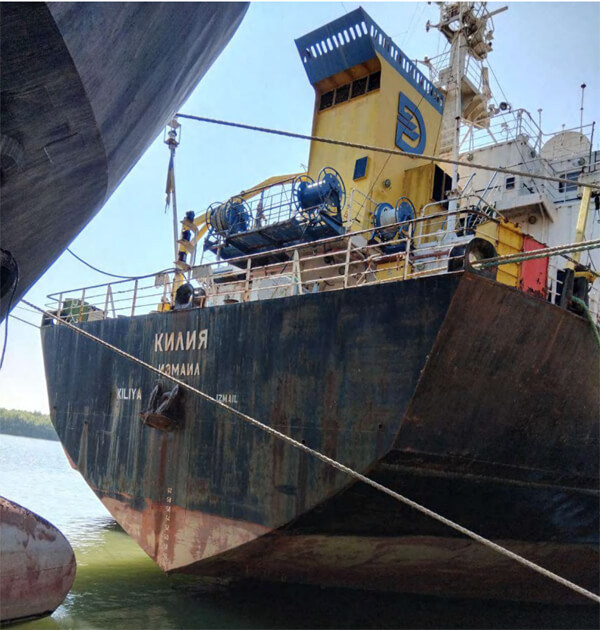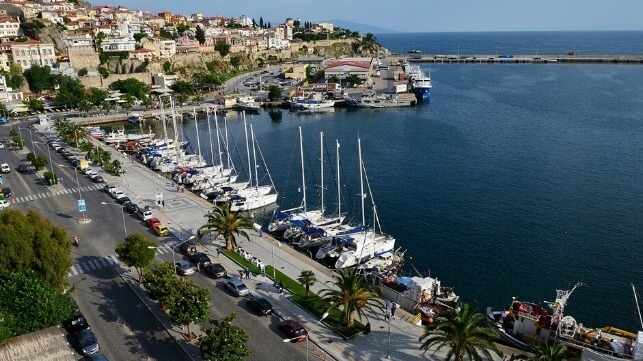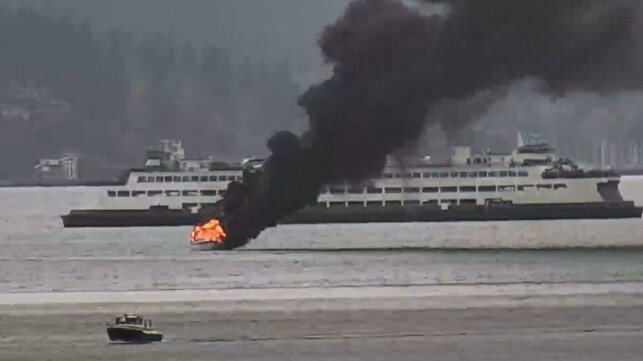Study Says Shipping Will Play Key Role in Carbon Capture and Sequestration

Shipping is likely to play a critical role in enabling the emerging carbon capture, utilization, and sequestration (CCUS) initiatives with the strongest opportunities in Asia. A new report by the Global Center for Maritime Decarbonization and Boston Consulting Group points to a strong opportunity in developing this new segment of shipping while also calling for support from governments and industry to enable the massive investments that will be required to develop the capacity anticipated by global scientists.
“We estimate that around 170 million tons per annum (MtPA) of CO2 captured using CCUS technology will be transported globally via shipping by 2050,” reports Boston Consulting. “Shipping would connect countries in areas with substantial CO2 emissions to those with available sequestration capacity.”
Most scientists believe that CCUS will have to be a critical part of a global decarbonization strategy. They point to hard-to-abate emitters for which utilization or sequestration is seen as a viable solution. Efforts are already underway to develop the capacity and early tests have been done on the technologies required to inject CO2 below the seabed as a means of removing it from the atmosphere.
The study explored scenarios where shipping could play a role in CO2 transport. It concludes that shipping CO2 is more economical over long distances compared to pipeline transport. The researchers determined that shipping becomes economically advantageous compared with pipeline transport of the same amount of CO2 at longer distances. They set the threshold distance at 500 km (310 miles) saying it would then be economically viable for transporting 5 MtPA of CO2 by ship.
Shipping CO2 they found will be especially important in Asia Pacific where there will be greater distances between the emitters and storage locations. For example, they highlight the Northern Lights project in Norway is expected to transport CO2 between 500 and 1,000 km (320 to 620 miles) with vessels delivering it to the staging site and a pipeline moving the CO2 into the storage caverns below the sea floor. However, the study points out that in Asia routes could be 450 to 970 km (480 to 600 miles) and the longest routes between Northeast Asia and Australia would stretch 6,000 to 11,000 km (3,700 miles to 6,800 miles).
Within Asia-Pacific, the report concludes the volumes for transporting CO2 for storage could reach 100 MtPA by 2050. They highlight that Australia, Indonesia, Japan, Malaysia, Singapore, and South Korea are each pursuing CO2 storage and cross-border partnerships.
“While shipping CO2 under low pressure may offer economic benefits, such as increased vessel capacity and lower capital expenditure, it is operationally disadvantaged because storing CO2 at such conditions, which are closer to the triple point will increase the risk of dry ice formation,” the report cautions. They point to other dangers such as impurities in CO2 that might also have implications for the infrastructure build out.
To achieve the volumes anticipated in the Asia-Pacific region they predict it will require 85 to 150 liquified CO2 carriers of 50 kt capacity. The total investment could reach $25 billion by 2050.
“Creating a market of this scale will necessitate concerted efforts from both the public and the private sector, including economic incentives, long-term contracts for midstream players, and greater clarity on key standards,” the report concludes. They write that the investment required will be substantial to scale up cross-border CCUS will include shipbuilding, port, and terminal infrastructure development.
They identify several financial and regulatory gaps that will be needed before cross-border CCUS materializes. They call for direct economic support from governments to aid in the development of the industry along with long-term contracts and minimum volume guarantees from emitters. Recognizing the current nascent level of regulations, they call for countries to establish domestic regulations for issues such as carbon accounting and cross-border CCUS projects.
They also highlight that the shipping industry will require clarity of standards and specifications for transporting CO2. They point to the need for clear rules and guidelines on issues such as the tolerance for impurities in CO2 cargo, operating pressures, and temperatures along the value chain.
While they forecast a critical role for a new segment of the shipping industry transporting CO2, the report also concludes the success of CCUS hinges on the simultaneous development of all parts of its value chain, including midstream activities line shipping, and intermediate storage.” They call on public and private stakeholders to collaborate and address the challenges so that a full CCUS value chain can be established unlocking the decarbonization opportunities.














